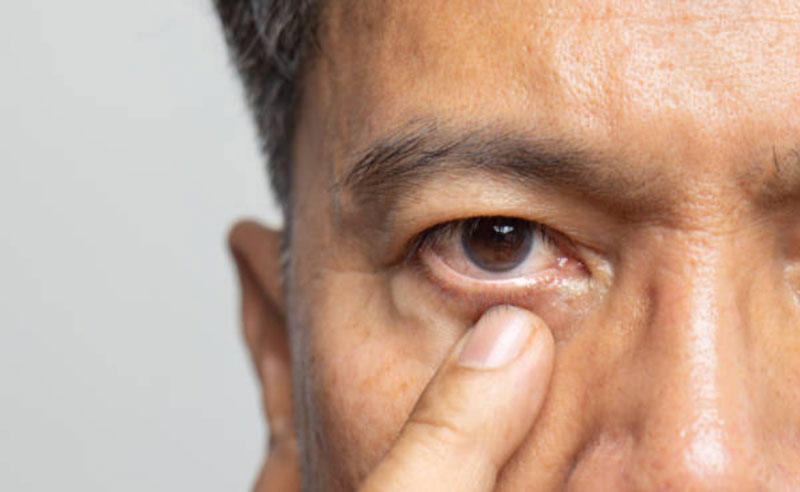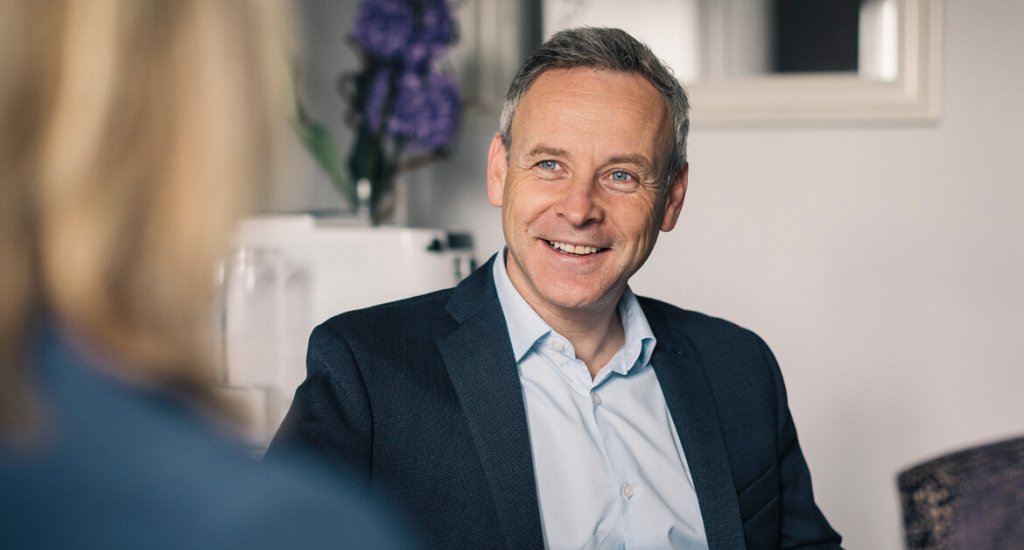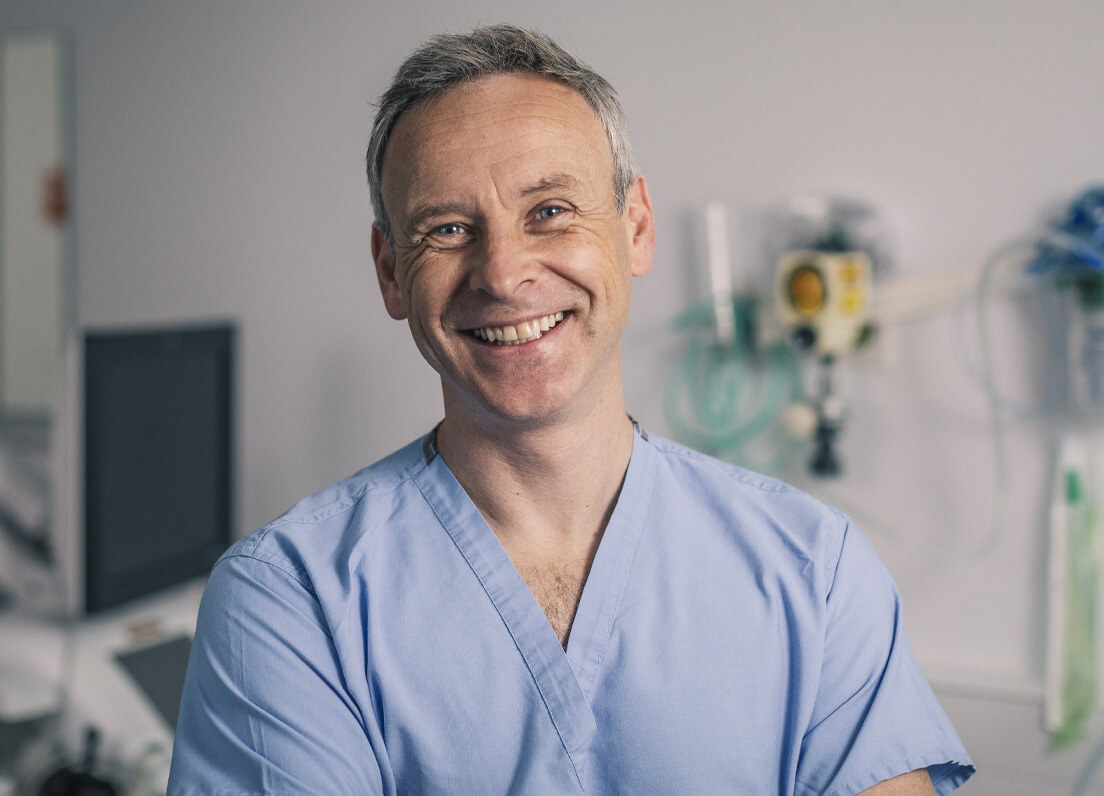A Modern Approach to Rejuvenating Your Eyes with Blepharoplasty
Blepharoplasty, often known simply as Eyelid surgery, is a procedure that has gained significant attention lately. At its core, this surgery aims to revise the eyelids, whether for aesthetic improvements or functional benefits. However, within this broad field lies a specific technique known as Transconjunctival Blepharoplasty. This method, while less discussed, offers unique advantages and considerations that are important for anyone considering Eyelid surgery to understand.
In this blog, Consultant Plastic Surgeon Anthony MacQuillan will explore what Transconjunctival Blepharoplasty is, how it’s performed, and who might be the best candidates for this type of surgery. He will also look at the benefits and potential risks associated with it.
What Is Blepharoplasty?
Blepharoplasty is a procedure that you might consider if you’re looking to enhance the appearance of your eyelids. This surgery can be performed on the upper lids, lower lids, or both. Its primary aim is to remove or reposition excess tissue, such as skin and fat, and in some cases, to reinforce surrounding muscles and tendons.
There are several types of blepharoplasties, each tailored to address specific concerns. The most common types include:
- Upper Eyelid Surgery: This is often chosen by people who have sagging or drooping upper eyelids. The procedure involves removing excess skin, fat, and muscle from the upper eyelid area to create a more alert and youthful appearance.
- Lower Eyelid Surgery: This targets the lower eyelid and is typically aimed at reducing wrinkles, removing bags under the eyes, and improving overall shape. In this procedure, excess skin and fat are removed or repositioned to achieve a smoother, more refreshed look.
- Double Eyelid Surgery: Popular particularly in East Asian countries, this procedure creates a crease in the upper eyelid that appears when the eyes are open. It’s often sought for cosmetic reasons, to achieve a specific aesthetic look.
- Transconjunctival Blepharoplasty: This is a variation of lower Eyelid surgery where incisions are made inside the eyelid, leaving no visible scars. It’s particularly suitable for removing or repositioning fat without the need for skin removal.
What is Transconjunctival Blepharoplasty?
Transconjunctival Blepharoplasty is a specific type of Eyelid surgery that focuses on the lower eyelid. It’s a technique that involves making an incision inside the lower eyelid, which is a key difference from the traditional approach where the incision is made just below the lashes or on the skin. This method is primarily used for removing or repositioning excess fat in the lower eyelids, a common concern that leads to bags under the eyes.
One of the main differences between Transconjunctival Blepharoplasty and Traditional Blepharoplasty lies in the incision technique. In Traditional Blepharoplasty, the incision is external, leaving a faint scar along the lash line. While these scars are typically well-hidden and fade over time, they are still a consideration for many people. Transconjunctival Blepharoplasty, on the other hand, leaves no visible external scars, as the incision is made inside the eyelid. This approach is particularly appealing if you’re concerned about visible scarring.
Another difference is the focus of the procedure. Traditional Blepharoplasty often involves the removal of both skin and fat. It’s a more comprehensive approach that can address multiple issues, including excess skin, which can contribute to wrinkles and bulges. Transconjunctival Blepharoplasty, however, is primarily concerned with the fat pads beneath the eyes and doesn’t typically involve skin removal. This makes it an excellent option if your primary concern is under-eye bags without significant skin sagging.
Benefits of Transconjunctival Blepharoplasty
The advantages of Transconjunctival Blepharoplasty are quite specific. Firstly, the lack of external scarring is a significant benefit. This can be a deciding factor if you’re particularly concerned about the aesthetic outcome and want to avoid any visible signs of surgery. Secondly, this approach reduces the risk of lower eyelid retraction, a condition where the lower eyelid is pulled down and doesn’t sit correctly against the eye. This is because the procedure doesn’t disturb the muscle or skin structure of the eyelid.
Additionally, Transconjunctival Blepharoplasty is often associated with a quicker recovery time compared to traditional methods. Since the surgery is less invasive, there’s generally less swelling and bruising, allowing you to return to your normal activities sooner. This can be an important consideration if you’re looking for a procedure with minimal downtime.
How Is Transconjunctival Blepharoplasty Performed?
If you’re considering Transconjunctival Blepharoplasty, understanding the procedure from start to finish can help you feel more prepared and at ease. Here’s a detailed look at what you can expect, from the initial preparations to the surgery itself:
Pre-operative Preparations
Before the surgery, you’ll have a consultation with Anthony. This is your opportunity to discuss your goals and any concerns. Your surgeon will evaluate your medical history and may advise you to stop taking certain medications or supplements that could affect bleeding, such as aspirin or ibuprofen, for a period before the surgery.
You’ll also receive instructions on how to prepare for the day of the surgery, including guidelines on eating, drinking, and medication. It’s important to arrange for someone to drive you home after the procedure, as you won’t be able to drive yourself.
Step-by-Step Description of the Procedure
- Anaesthesia: On the day of the surgery, you’ll be given local anaesthesia with sedation or general anaesthesia, depending on your specific case and your surgeon’s preference. Local anaesthesia with sedation will numb the area around your eyes and make you feel relaxed but awake, while general anaesthesia will put you to sleep for the duration of the procedure.
- Making the Incision: Once the anaesthesia takes effect, Anthony will make a small incision inside the lower eyelid. This incision is hidden from view and allows your surgeon to access the fat pads beneath the eye without leaving any visible scars.
- Removing or Repositioning Fat: Anthony will then carefully remove or reposition the excess fat to reduce bulges under the eyes. This step requires precision and skill to ensure a natural-looking result.
- Closing the Incision: After the fat has been addressed, the incision is closed with tiny, dissolvable stitches. These stitches are inside the eyelid, so they won’t be visible and will dissolve on their own over time.
Ideal Candidates for Transconjunctival Blepharoplasty
When you’re considering Transconjunctival Blepharoplasty, it’s important to understand whether you’re a suitable candidate for this procedure. Not everyone is, and there are specific criteria that can help determine if this is the right choice for you.
Criteria for a Good Candidate
- Primary Concern is Under-Eye Bags: The ideal candidate for Transconjunctival Blepharoplasty is someone primarily concerned with bags under their eyes, rather than excess skin. This procedure is excellent for addressing the fat that contributes to these bags, offering a more refreshed and youthful appearance.
- Overall Good Health: As with any surgery, being in good general health is important. This means no major medical conditions that could complicate surgery or recovery. Your surgeon will discuss your medical history with you to ensure you’re fit for the procedure.
- Realistic Expectations: Understanding what the surgery can and cannot achieve is crucial. This procedure is effective for improving the appearance of under-eye bags, but it won’t radically change your overall appearance or stop the ageing process.
- Non-smokers or Willing to Quit: Smoking can significantly affect the healing process. If you’re a smoker, you’ll be advised to quit or at least refrain from smoking for a certain period before and after the surgery.
Age Considerations
There’s no perfect age for Transconjunctival Blepharoplasty, but it’s most commonly performed on individuals between the ages of 30 and 60. Younger patients usually have better skin elasticity, which can contribute to a successful outcome. However, age alone isn’t a deciding factor. The condition of your skin and the specific issues you’re looking to address are more important.
Health Conditions That May Affect Eligibility for the Surgery
Certain health conditions can impact your suitability for this procedure. These include:
- Eye Conditions: Issues like dry eyes, glaucoma, or retinal problems need to be carefully considered. Anthony will likely consult with your ophthalmologist to determine if surgery is safe for you.
- Chronic Illnesses: Conditions like diabetes or high blood pressure need to be well-managed before undergoing surgery. These conditions can affect healing and recovery.
- Thyroid Disorders: Conditions like Graves’ disease can affect your eyes and may influence the decision to have Eyelid surgery.
- Skin Conditions: Certain skin conditions, especially those affecting the eyelids, may need to be addressed before surgery.
Recovery and Aftercare after Transconjunctival Blepharoplasty
After undergoing Transconjunctival Blepharoplasty, understanding the recovery process and how to care for yourself post-surgery is essential. Here is what you can expect during the recovery period, along with some aftercare tips and advice on recognising signs of potential complications.
Expected Recovery Timeline
- First Few Days: Initially, you may experience swelling and bruising around the eyes. This is normal and should start to subside within a few days. It’s important to rest and keep your head elevated during this time to help reduce swelling.
- First Week: By the end of the first week, you’ll likely notice a significant reduction in swelling and bruising. If you had dissolvable stitches, they should start to dissolve around this time. Most people feel comfortable returning to work and normal activities within 7-10 days, although this can vary.
- Following Weeks: Over the next few weeks, any residual swelling and bruising will continue to diminish. You’ll start to see the final results of the surgery as the area heals and settles.
- Full Recovery: Complete healing can take a few months, but most of the visible recovery occurs within the first few weeks. It’s important to follow your surgeon’s advice and attend follow-up appointments to ensure everything is healing as expected.
Aftercare Tips and Recommendations
- Cold Compresses: Applying cold compresses during the first 48 hours can help reduce swelling and bruising.
- Avoid Strenuous Activities: For the first few weeks, avoid activities that increase blood flow to the eyes, like bending, lifting, or sports.
- Protect Your Eyes: Wear sunglasses to protect your eyes from sunlight and wind when you go outside.
- Eye Care: Follow Anthony’ instructions regarding eye drops or ointments to keep the eye area lubricated.
- Sleeping Position: Sleep with your head elevated for the first few days to help reduce swelling.
- Avoid Rubbing Your Eyes: It’s important not to rub your eyes while they are healing.
- Healthy Lifestyle: Maintain a healthy diet, stay hydrated, and avoid smoking, as this can hinder the healing process.
Signs of Complications to Watch For
While complications are rare, it’s important to be aware of signs that might indicate a problem:
- Persistent Pain: Some discomfort is normal, but if you experience severe or increasing pain, contact your medical team.
- Changes in Vision: Any significant changes in your vision should be reported immediately
- Excessive Swelling or Redness: While some swelling and redness are expected, if it worsens or doesn’t gradually improve, it could be a sign of infection.
- Unusual Discharge: Any unusual discharge from the eyes should be checked by your surgeon
- Bleeding: Some minor bleeding is normal, but if you experience heavy bleeding, seek medical attention.

FAQs about Transconjunctival Blepharoplasty
How does Transconjunctival Blepharoplasty differ from Traditional Blepharoplasty?
- The primary difference lies in the incision location and the focus of the procedure. Traditional Blepharoplasty often involves an external incision below the eyelashes and can include the removal of both skin and fat. Transconjunctival Blepharoplasty, however, makes the incision inside the eyelid and focuses solely on the fat, not the skin. This approach is particularly beneficial for those who don’t need skin removal but want to address under-eye bags.
Who is the ideal candidate for Transconjunctival Blepharoplasty?
- The ideal candidate is someone who is in good overall health and has realistic expectations about the results. This procedure is particularly suited for individuals who are concerned about under-eye bags caused by excess fat but do not have significant sagging skin around the lower eyelids. Age is not a strict criterion, but skin elasticity and general health are important factors.
What is the recovery process like for Transconjunctival Blepharoplasty?
- Recovery involves some swelling and bruising, which usually subsides significantly within the first week. Most people can return to work and normal activities within 7-10 days. Complete healing and final results may take a few months to fully develop. It’s important to follow post-operative care instructions, such as using cold compresses and avoiding strenuous activities, to aid in a smooth recovery.
Are there any risks or potential complications with Transconjunctival Blepharoplasty?
- As with any surgical procedure, there are risks involved. However, complications are relatively rare. Potential risks include infection, bleeding, and changes in sensation. There’s also a small risk of changes in eyelid position or function. Choosing a qualified and experienced surgeon can significantly reduce these risks.
Further Reading about Face Procedures with Consultant Plastic Surgeon Anthony MacQuillan
- How to Reduce Bruising and Swelling after Facelift
- Recovery after Blepharoplasty
- Procedures to Have with a Facelift
- Hooded Eyelids
- How to Remove Stitches after Blepharoplasty
- What is a Quad Blepharoplasty?
- What Can Be Done about Eye Bags
Medical References about Transconjunctival Blepharoplasty
- Transconjunctival Approach Blepharoplasty – Medscape
- Lower Lid Transconjunctival Blepharoplasty – Medscape
- Transconjunctival Blepharoplasty – NCBI
- Complications of blepharoplasty – Science Direct
- Transconjunctival Upper Lid Blepharoplasty – Oxford Academic


